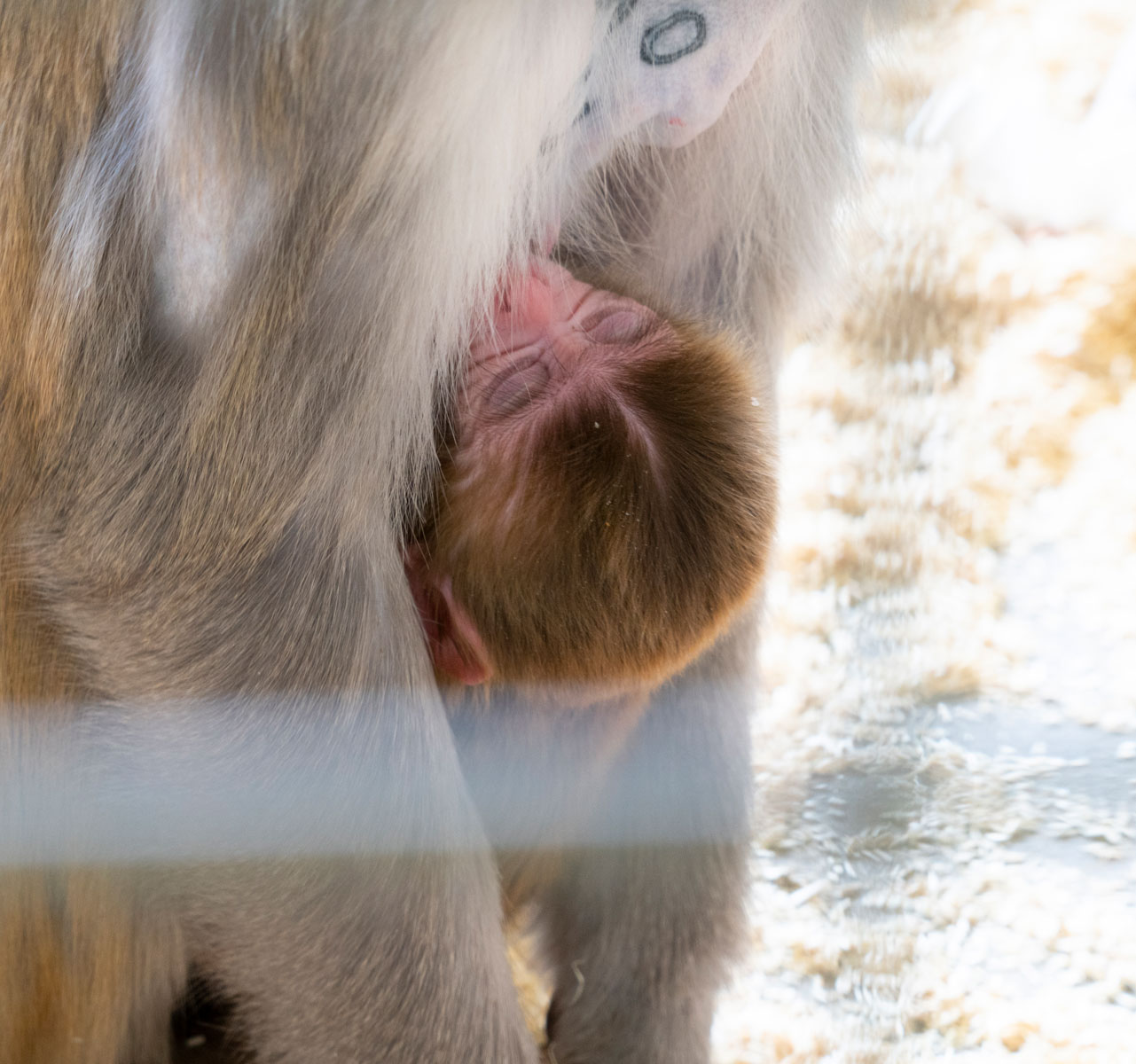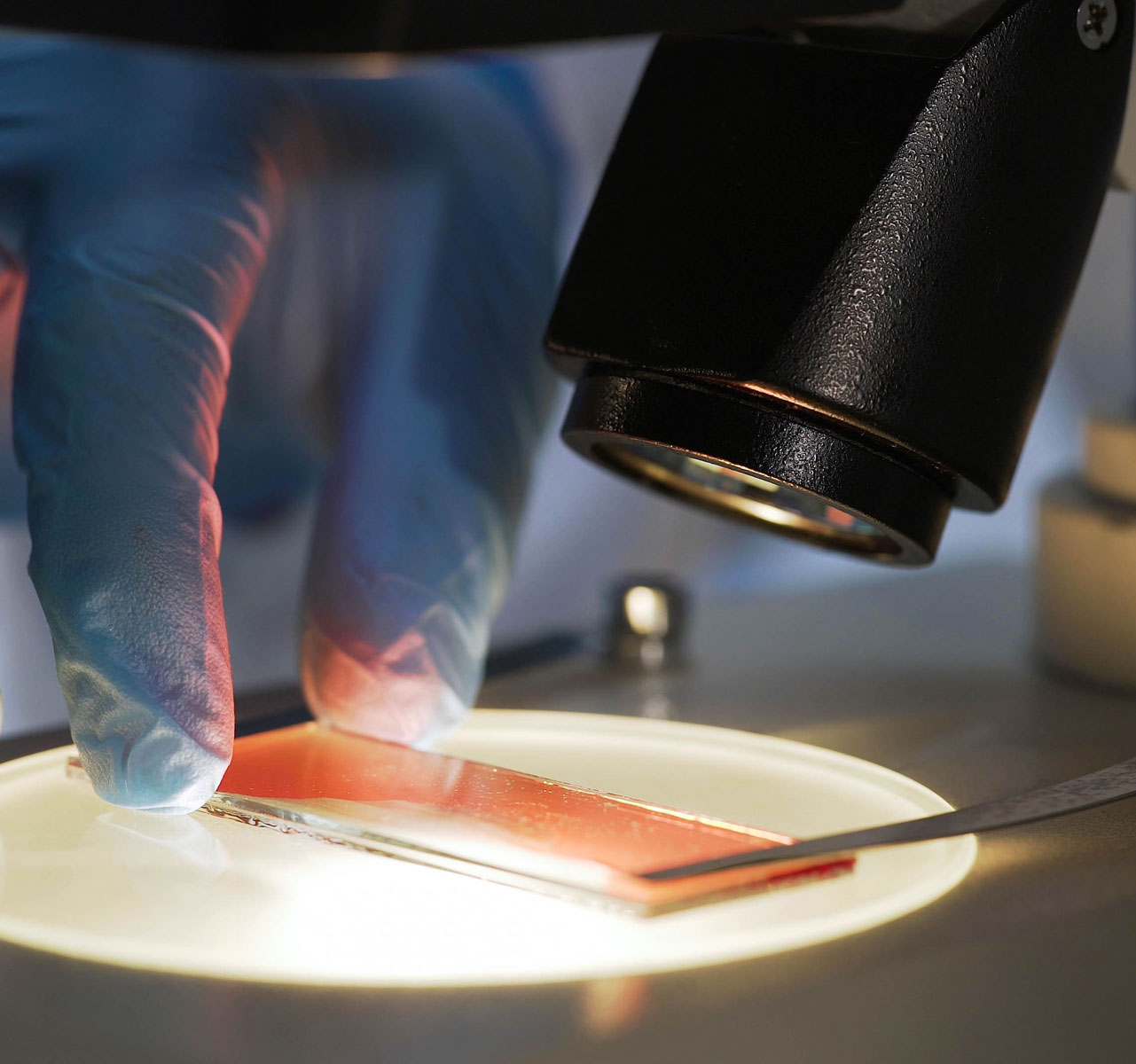General Primate Biology & Welfare
Maintaining the health and stability of the monkeys in our self-sustainable breeding colonies and research facility requires dedication and expertise. This is a joint effort between animal caretakers, veterinarian staff, ethologists, laboratory staff and experts in genetics.
Colony Management and birth control

Contraception is used for management purposes in our group housed non-human primate colonies. Frequent individual oral treatment is challenging and unreliable in socially housed macaques whereas surgical intervention is reliable but requires an invasive intervention and is in principle irreversible. Therefore, long-acting reversible contraceptives are used as they eliminate logistical problems associated with daily, weekly, or monthly administration. Etonogestrel (ENG) implants are progesterone only releasing rods that are reversible, long acting for at least three years, and commercially available for human as ImpanonⓇ or NexplanonⓇ. We have performed a retrospective data analysis detailing the contraceptive effectivity, dose and reversibility of subdermal inserted ENG implants. A success rate of 99.8% and 99.95% with ENG was observed for rhesus- and cynomolgus macaques respectively. ENG had no clinical effect on hemoglobin and blood chemistry parameters nor on the thickness of the endometrial lining or uterus volume. In 2023 more detailed analyses are performed.
TO TOP ^ < BACK << HOME
Environmental data in the breeding colony housing

In collaboration with expert groups on air quality from the Veterinary Faculty of Utrecht University the indoor environment of the breeding groups was assessed. The indoor temperature and relative humidity for both species were within comfortable ranges. The geometric mean (GM) ammonia, dust and endotoxin concentrations were within accepted human threshold limit values. The GM dust concentrations were significantly higher during the daytime than during the nighttime. Care must be taken that levels do not exceed accepted threshold values.
TO TOP ^ < BACK << HOME
Blood parameters

A retrospective longitudinal cohort study to estimate reference intervals for hematologic and serum biochemical values in clinically healthy macaques based on observed percentiles without parametric assumptions was conducted. In total, 4009 blood samples from 1475 macaques were analyzed with a maximum of one repeat per year per animal. Data were established by species, gender, age, weight-for-height indices, pregnancy, sedation protocol, and housing conditions. Most of the parameters profoundly affected just some hematologic and serum biochemical values. The results emphasize the importance of establishing uniform experimental groups with validated animal husbandry and housing conditions to improve the reproducibility of the experiments.
TO TOP ^ < BACK << HOME
Evaluation of antibiotic use

It is common practice to use antibiotics off-label to treat bacterial infections in macaques (Macaca sp.) housed in zoos, sanctuaries and in biomedical research centers. This implicates a lack of scientifically justified proof regarding efficacy and dosing of most of these drugs. Antibiotics with long elimination half-lives (>48h) and therefore requiring less frequent administration (long-acting antibiotics) would be very useful to treat macaques, as this will reduce handling related stress. Therefore, the pharmacokinetics (PK) of various antibiotics, such as the long-acting ampicillin (AMP-LA), is assessed in macaques. The first results of this ongoing research will be available in 2023.
TO TOP ^ < BACK << HOME
Microbiome Research

The mammalian virome (the total collection of viruses in and on the organism) has been linked to health and disease but our understanding of how it is structured along the longitudinal axis of the mammalian gastrointestinal tract (GIT) and other organs is limited. We have been involved in the metagenomic analysis of the prokaryotic and eukaryotic virome occupying various parts of the GIT, as well as liver, lung and spleen, in rhesus macaques. The data show that GIT virome composition was specific to the anatomical region. Upper GIT and mucosa-specific viruses were greatly under-represented in distal colon samples (representative for faeces). Nonetheless, certain viral and phage (viruses infecting bacteria) species were found ubiquitously in all samples from the mouth to the end of the colon. The dataset and its accompanying methodology may provide an important resource for future work investigating the biogeography of the mammalian gut virome. Currently, we are studying the microbiome in healthy and diseased macaques.
TO TOP ^ < BACK << HOME
Observations and training of animals

Behavioural observations and training of animals are very important topis at the BPRC. More than 60 cameras are currently installed, both in the breeding and in the experimental facilities, to observe behaviour of the animals when no humans are present. Knowledge of the behaviour of animals in the absence of humans is important to assess if animals are behaving normally. Positive Reinforcement training is an important topic at the BPRC and is widely implemented.
TO TOP ^ < BACK << HOME


